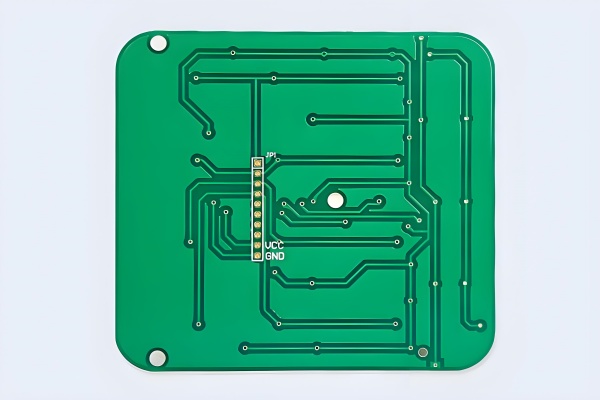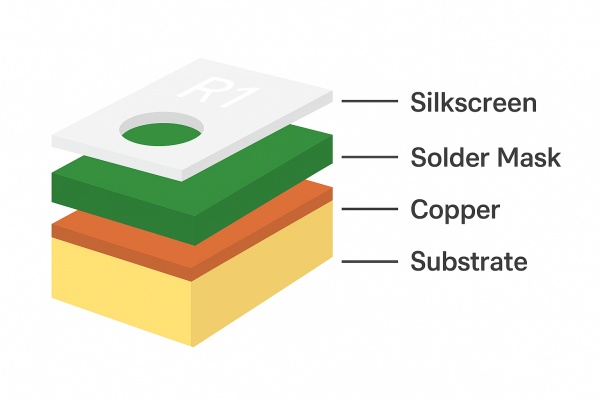Understanding FR4 for PCB: Why It’s the Industry Standard
 19 Jun 2025 17:12:59 GMT
PCBASAIL
19 Jun 2025 17:12:59 GMT
PCBASAIL
Did you ever wonder what FR‑4 actually is? Well, here’s the scoop in everyday language: FR‑4 is shorthand for “flame retardant level 4,” and it’s basically a fiberglass cloth that’s been laminated with epoxy resin. In plain terms, it’s that sturdy, flame‑resistant material you find at the heart of almost every PCB—single‑, double‑, and multilayer boards alike. Because it’s got such high mechanical strength and self‑extinguishing properties, most circuit boards out there are built on FR‑4.

What Makes up a PCB?
Before we dive into FR‑4’s perks, let’s quickly sketch out the anatomy of a PCB. Think of a board as a layered cake, where each layer plays a key role:
Substrate (Base Material). This is the foundation. It gives the board its rigidity, and in the FR‑4 world that means epoxy‑glass.
Copper Foil. On top of that substrate you’ve got thin sheets of conductive copper. On a single‑sided board it’s only on one face; on double‑sided, it’s on both sides. Those etched copper lines become your circuit traces.
Solder Mask. That green (or sometimes red, blue, black—you name it) coating you see on most PCBs is actually a protective layer. It keeps stray solder bits from shorting out your traces, and makes sure your solder only goes where you want it to. The little holes in the mask are precisely where components get soldered down.
Silkscreen. The final white layer—usually printed on top—is where you get component identifiers, logos, part numbers, and other helpful markings. It’s like the board’s user manual, printed right on its surface.
Depending on what you need, there are all kinds of substrates beyond FR‑4—high‑frequency laminates, metal cores (aluminum, copper), flexible plastics, and so on—but FR‑4 is by far the most ubiquitous.

Why FR‑4 Rocks: Key Features and Benefits
High Strength & Stability. Thanks to the glass cloth reinforcement, FR‑4 boards are mechanically stiff and dimensionally stable. They don’t warp or bow under normal conditions, which is crucial when you’re packing in fine-pitch components.
Excellent Flame Resistance. The “FR” in FR‑4 is no joke. If you set it alight under controlled test conditions, it’ll self‑extinguish—no wandering flames to torch your gadget.
Good Electrical Insulation. FR‑4’s dielectric properties are solid for general‑purpose electronics. It keeps signal cross‑talk and leakage currents in check for typical digital and analog circuits.
Smooth Surface & Consistent Thickness. You get a nice, even board without pits or bumps, and tight dimensional tolerances—great when you need precise drilling for plated through‑holes.
Cost‑Effective. Compared to exotic substrates, FR‑4 strikes a sweet balance of performance and price. That’s why it’s the go‑to for everything from hobby kits to industrial control boards.
Wide Industry Acceptance. It’s a recognized standard in sectors like military, aerospace, automotive, medical, and consumer electronics. You can count on FR‑4 meeting most generic industrial requirements.
On top of all that, FR‑4 laminates come in grades—so you can pick a version with a higher glass transition temperature (Tg) if you need to run lead‑free reflow at 245°C, for example.
PCB Material Families: Beyond FR‑4
While FR‑4 dominates, there are several other board materials you might bump into:
Glass‑Cloth Laminates (FR‑4, FR‑5). These are your standard epoxy‑glass boards. FR‑4 is the workhorse; FR‑5 is a higher‑Tg variant.
Paper‑Based Boards (FR‑1, FR‑2, FR‑3). Think phenolic resin bonded to paper pulp—cheap, but limited in performance. You still see these in low‑cost appliances and basic consumer goods.
Composite Epoxy Materials (CEM‑1, CEM‑3). A hybrid between paper and glass‑cloth. CEM‑1 has a paper core and glass cloth surface; CEM‑3 uses non‑woven fiberglass. They offer a mid‑range alternative: better mechanical and dielectric properties than paper, yet cheaper than FR‑4.
High‑Frequency Laminates. Specialized for RF applications—PTFE or ceramic‑filled substrates that keep dielectric constants super stable at gigahertz frequencies.
Metal Core PCBs (MCPCB). An aluminum or copper core acts as a heat spreader underneath the dielectric and copper layers. Perfect for high‑power LEDs, motor drives, and power converters.
Flexible & Rigid‑Flex Boards. Polyimide films or hybrid flex/rigid stacks allow bending or folding. You’ll spot these in wearables, foldable phones, and complex aerospace harnesses.
Each material brings trade‑offs: cost, thermal performance, impedance stability, mechanical durability, and so on. But FR‑4 remains the jack‑of‑all‑trades for general electronics.
When NOT to Use FR‑4
Queen FR‑4 handles most gigs, but there are exceptions:
Lead‑Free RoHS Reflow. If you’re doing a Pb‑free assembly at 250 °C peak, make sure your FR‑4 grade has a high enough Tg—otherwise you risk board warp or delamination. For extreme reflow profiles, you might switch to a high‑Tg laminate.
High‑Frequency Signals. FR‑4’s dielectric constant (Dk) can vary too much at microwave frequencies, leading to impedance mismatch and signal reflections. RF boards often use PTFE laminates or ceramic‑filled materials instead.
Harsh Thermal Environments. If your PCB will sit near an engine block or inside a furnace, FR‑4 may soften or degrade. In those cases, you’d jump to a high‑temperature polyimide or even ceramic substrate.
Ultra‑High‑Speed Digital. For bitrates above, say, 10 Gbps, FR‑4’s loss tangent can introduce too much signal attenuation. You might need a low‑loss laminate to preserve edge rates and eye‑diagrams.
A Quick Example: Industrial Battery Circuit Board
Take an industrial UPS or battery management system: it usually calls for an FR‑4 board because it’s cost‑sensitive yet needs flame retardance and reasonable thermal performance. You get reliable electrical insulation for the SMBus lines, sturdy mounting for big capacitors, and no risk of flame propagation if a switch‑mode regulator overheats.
Wrapping It Up
FR‑4 is the unsung hero behind billions of PCBs out there. It gives you:
Mechanical strength so boards stay flat and holes stay true.
Flame resistance to meet safety regs and prevent disaster.
Good dielectric performance for everyday electronics.
Affordable pricing that scales from DIY kits to multinational product lines.
Sure, specialized applications might call for exotic laminates, metal cores, or flexible films—but if you’re designing a garden‑variety digital board or most analog circuits, FR‑4 will probably be your first pick. And now you know why!
In a Nutshell
FR‑4 is the go‑to material for most PCBs thanks to its glass‑fiber reinforcement, excellent flame resistance, reliable electrical insulation, and cost‑effective pricing. Whether you’re building a simple DIY single‑layer board or a dense, 12‑layer server motherboard, FR‑4 gives you the mechanical stability and safety specs you need—while keeping budget and manufacturability on track.
At PCBA SAIL, we’ve turned FR‑4 expertise into an art form. With three automated, UL‑ and ISO‑certified factories and decades of experience in high‑volume PCB production, we deliver:
Precision Quality: From single‑sided hobby boards to complex multilayer FR‑4 assemblies, every batch meets RoHS and IPC Class 2 (or higher) standards.
Fast Turnaround: Automated lines and in‑house tooling mean prototypes in 24–48 hours and volume runs in days—not weeks.
Competitive Pricing: Our scale and lean processes let us pass savings on to you, whether you need ten pieces or ten thousand.
Global Delivery: Trusted by customers across North America, Europe, and Asia, we offer DDP shipping and local support to keep your supply chain smooth.



